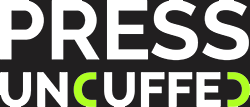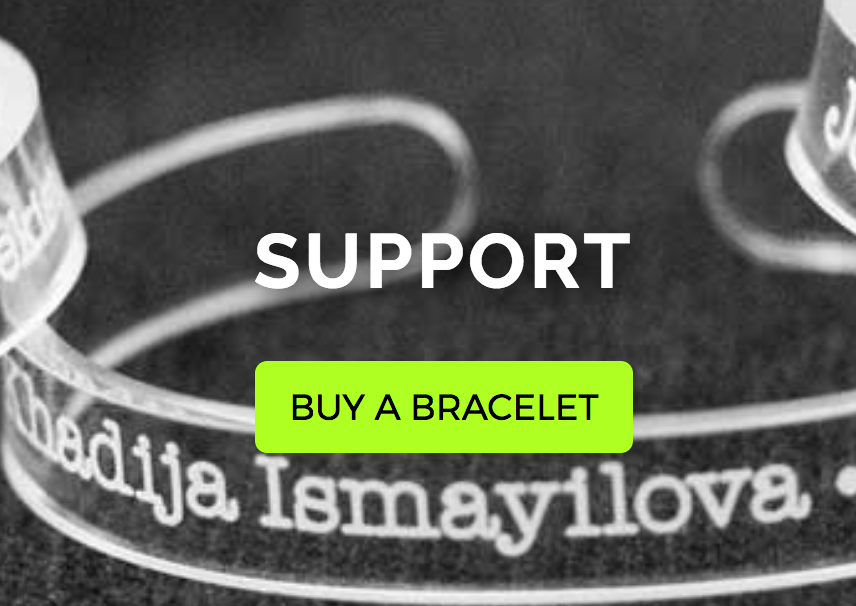Is ? really? ?: An Analysis on Problematic Memes Surrounding the 2016 Presidential Election
Any American with a social media account in 2016 has seen friends share political news articles, speeches, and memes regarding the year’s presidential election. This latter category may have included “Bernie or Hillary?” posters alleging Sanders’s admiration of lizards, edited images of Donald Trump with small hands, or maps predicting Jeb Bush to win in a landslide— in addition to the usual dog GIFs. These examples may be fairly innocuous, but they fail to capture the capacity of memes to dictate online discourse. Because memes and fake new share similar means of propagation while the former lacks a need for strong ethos, memes are uniquely effective in manipulating viewer behavior, and they are just as uniquely difficult to combat. First, the scope of what is considered a meme for the sake of this paper and the significance of memes in culture will be elucidated. Next, examples from the 2016 presidential election will demonstrate the capacity of memes to reach and influence audiences; similarly, the non-necessity of memes to be factual and their role as an element of pop culture will demonstrate an opportunity for meme engagers to diffuse accusations of propaganda. Lastly, possibilities to combat false and incendiary memes and the difficulties therein will be discussed.
(CW: This paper discusses memes including hateful rhetoric—including ableism, Islamophobia, racism, and anti-Semitism.)
Defining Memes and Their Significance
Internet memes are known for their original presentation in captioned cat images from 2008, but their forms today span video, text, images, GIFs, and other forms. This paper will focus on image-based memes. Moreover, it must be noted that a popular or viral graphic or article is not inherently a meme, nor is a a graphic that takes a memetic format without being
distributed online. “Problematic” memes will be considered so if they are defamatory, bigoted, or otherwise designed to degrade people.
Memes exist as a product of our pop culture, though this denomination should not be conflated with insignificance. Pop culture theorists consider pop culture consumers as informed agents exercising their influence to bring elements to celebration or demise based on individuals’ interests and needs (Fedorak 2009, 4). This theory exemplifies the mechanics of memes quite succinctly: Those with salient messages and memorable presentation are replicated and shared, while those that are cognitively dissonant or visually distasteful fail to do so. However, pop culture may bear commercial similarities, as it does assume a degree of conformity and impose social manipulation akin to marketing (Fedorak 2009, 9). Similarly, memes capitalize on our instincts to interpret data categorically and to feel “in” on a joke, and thus content producers can take advantage of these desires to manipulate online behavior. Another word for visual content to alter behavior is “propaganda.”
Memes as Propaganda
The allegations of mainstream media being “fake news” in the United States and the contentions that these media are our only hope to combat disinformation are rooted in the shared belief that journalism should uphold objective truth. This does not apply to fake memes. Dornan (2016) explains that “because content created by amateurs owes nothing to the truth discipline of socially responsible media organizations, it can retail falsity just as easily as it can propagate endearing GIFs of puppies at play” (6). Creators and distributors of memes bear no journalistic obligation to abstain from publishing falsehoods, and with no real consequences for sharing an image citing false information, there is little motivation to stop.
With such a platform to spread messages with little repercussion, Russian trolls took to Unites States social media surrounding the 2016 elections. Poulsen (2017) considers one Russian-operated Facebook group, SecuredBorders, promoted with the site’s advertising revenue: Memes posted by this page included a photo of a protester holding a sign reading “Trump is a fascist” with a caption “Libtardism is a mental disease—Like if you agree,” altered Starbucks logos reading “Shariabucks” and “Starburka” in response to the company’s promise to hire refugees, and a photograph of a Muslim family captioned “New modern warfare by birth rate—Taking over the countries without single bullet [sic]” (Poulsen 2017). Upon closing, SecuredBorders had about 133,000 followers (Poulsen 2017). Considering that the follower count does not include the viewership these images received from shares or recommended content, this page demonstrates that creators of this nature of memes have a wide audience.
While quantifying exposure—as limited as it is—may be the most available metric for
determining a meme’s impact, the correlation between exposure and internalization renders it more useful than it may seem. On the side of consumers, multiplicity of content in support of a candidate or of particular ideals makes them seem “more legitimate, more widely
supported” (Woolley and Guilbeault 2017, 8). In other words, mere exposure in high enough quantities can make messages like SecuredBorders’s seem normal and accessible. On the side of content producers, there is a similar phenomenon. Richard Spencer, president of the white nationalist National Policy Institute, described meetings with youth from 4chan who “want[ed] to get these arguments [critiquing race relations, immigration, Jewish influence, etc.] so [they] can really piss people off” (Reeve 2016): Spencer described it as a self-fulfilling prophecy where, after reading these messages and producing web content bolstering it, people internalize it
in what he calls a “meme magic” (Reeve 2016). Dr. Timothy Summers put this well in an speech on October 2, 2017, when he explained, “Art isn’t manipulation of pigment, but [of] people.” Engagement in any form with message-driven memes comes with some inherent degree of internalization.
Because memes stand more as art than news, they have a lack of inherent authority that makes them particularly difficult to critique. Richard Spencer himself noted the public opinion of memes as just “crazy cat[s] and Pepe the frog” (Reeve 2016). Should any party of a discussion on the societal impact of memes take Spencer’s supposition, they have the potential to claim that they have no real power. More interestingly, taking interest in subversive memes has been noted as a sort of grasping for straws. An article from Nature once suggested a correlation between human geography and lactose intolerance, 4chan users constructed racist poetry in response, and later suggesting milk as a symbol for whiteness (Ellis 2017). Weeks after, neo-Nazis trolled an anti-Trump Shia LaBeouf performance while loudly drinking milk, and several news outlets took note of this (Ellis 2017). Ellis (2017) noted that, “in the eyes of the trolls, [this pattern] makes the mainstream media look like buffoons.” Here, the media’s attempt to engage with memetic culture only led to accusations of obsession—only enhancing the memes’ power to reiterate the creators’ beliefs and influence public behavior. Thus strengthening of beliefs, as put by Plevriti (2014), demonstrates how, “[t]hrough shared humour, [netizens] create a collective, in-group
identity” (19). A similar case is observed in the use of Pepe the frog and emojis for the “OK” gesture. Evidently, through the lack of authority granted to memes, this in-group identity can be publicly displayed and be simultaneously played off as ironic and suggestive of in-group belonging.
Solutions
Whereas quelling disinformation in journalism often has systematic solutions, memes, as a cultural product rather than an occupational one, are not as clear to address. On September 18, 2017, Dr. Sarah Oates noted to Dana Priest’s JOUR 459T class: “Culture moves at a speed and flexibility that gets beyond censorship,” in reference to Russian netizens using memes to covertly express dissent. Attempting to treat problematic memes identically to problematic news articles would prove unhelpful. Nonetheless, tactics used to address disinformation may still be of use.
Incendiary memes capitalize on human perception similarly to a fake news story.
According to Ben Nimmo, a successful disinformative piece will have four components: appeal to emotion, appeal to authority, an insertion point, and a source of mass viewership (Hazard Owen 2017). Memes, lacking authoritative hierarchy, cannot realistically have their appeal to authority challenged. Viewership and platforms can only be viable routes if the hosting site imposes some form of censorship; while Facebook and Twitter are reluctant but willing to do so in certain cases, sites like 4chan and Gab explicitly allow such content. The most effective solution may therefore be in addressing the emotional component of political memes.
Eroding the power of problematic memes requires eroding their inherent anger. Plevriti (2014) asserts that political memes and popular culture seek not to provide information or encourage debate, but to invoke passion (40). In the cases noted prior in this paper, this passion may manifest as anger toward other groups, criticism, or the status quo. Quelling rage in a case like this is highly prone to backfire; when a person is corrected on a behavior linked to their identity, they often interpret that correction as an attack and counter-intuitively further that belief. As such, this paper suggests that readers confronted with problematic memes simply disengage.
Report content if it violates the terms of the site, block the user if they continuously post incendiary content, but remember that any form of interaction with such posters is more likely to bring harm to the viewer than insight to the poster.
On a larger scale, this role of memes can be further established through dedication to media literacy. “Memes” may not have existed in most laypeople’s lexicons ten years ago, so it is completely understandable that their sociocultural is not widely understood. Simply because memes are online and seem more “pop” than “culture” does not mean that they cannot affect people profoundly; the 2016 election–era memes from Russia are reminders that their audience can be wide and their sources and motivations can be fabricated. Whether a viewer, sharer, producer, or critic, one’s engagement with memes legitimizes their messages and further ingrains them into a part of our cultural repertoire. As painful as it may be for avid netizens, sometimes the best way to better the internet media experience is to turn instead to the usual dog GIFs.
References
Dornan, Christopher. 2017. “Dezinformatsiya: The past, present and future of ‘fake news.’” Canadian Commission for UNESCO, March 2017. http://unesco.ca/~/media/unesco/ news/2017%2003%2030%20dezinformatsiya%20the%20past%20present%20and%20 future%20of%20fake%20news%20by%20c%20dornan%20ccunesco.pdf.
Ellis, Emma Grey. 2017. “The Alt-Right’s Newest Ploy? Trolling With False Symbols.” Wired, May 10, 2017. https://www.wired.com/2017/05/alt-rights-newest-ploy-trolling-false- symbols/.
Fedorak, Shirley. 2009. “Part I: Introduction to Pop Culture.” In Pop Culture: The Culture of Everyday Life, 1–22. Toronto: University of Toronto Press.
Hazard Owen, Laura. 2017. “Want to stop a spreading fake news story? Choose one of these four points of attack to fight back.” Nieman Lab, May 26, 2017. http://www.niemanlab.org/ 2017/05/want-to-stop-a-spreading-fake-news-story-choose-one-of-these-four-points-of- attack-to-fight-back/.
Plevriti, Vasiliki. 2014. “Satirical User-Generated Memes as an Effective Source of Political Criticism, Extending Debate and Enhancing Civic Engagement.” Master’s dissertation, University of Warwick.
Poulsen, Kevin. 2017. “30 Batsh*t Crazy, Mostly Racist Facebook Memes the Russians Used to Corrupt Your Mind.” Daily Beast, September 9, 2017. http://thebea.st/2jcR1hS.
Reeve, Elle. 2016. “The face of the alt-right: Our extended interview with white nationalist Richard Spencer.” Vice News, December 12, 2016. https://news.vice.com/story/we- memed-alt-right-into-existence-our-extended-interview-with-richard-spencer-on-white- nationalism.
Woolley, Samuel, and Douglas Guilbeault. 2015. “Computational Propaganda in the United States of America: Manufacturing Consensus Online.” Computational Propaganda Research Project. University of Oxford, June 2016. http://comprop.oii.ox.ac.uk/wp- content/uploads/sites/89/2017/06/Comprop-USA.pdf.
Campaign
About this Site
Pressuncuffed.org seeks to encourage and promote rigorous student reporting, scholarly research and debate on the role of, and obstacles to, independent journalism in the United States and abroad. Our website features reporting by University of Maryland students about press freedom in the United States and abroad. It also offers resources to instructors elsewhere who may want to teach classes or hold workshops on this theme. In the near future, this site will become a place for student work from around the country and abroad.
Dana Priest, two-time Pulitzer Prize winner at The Washington Post and Knight Chair in Public Affairs Journalism at the University of Maryland.


